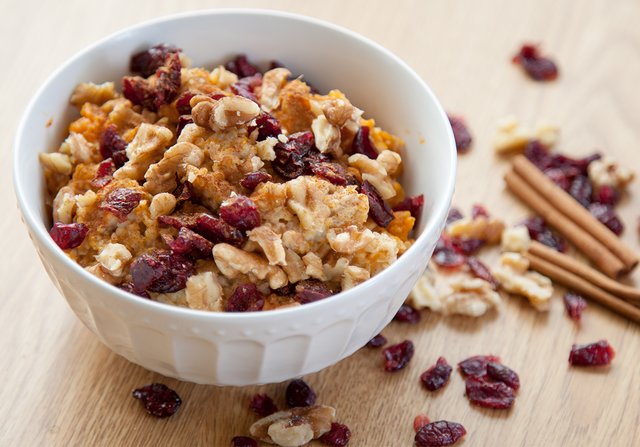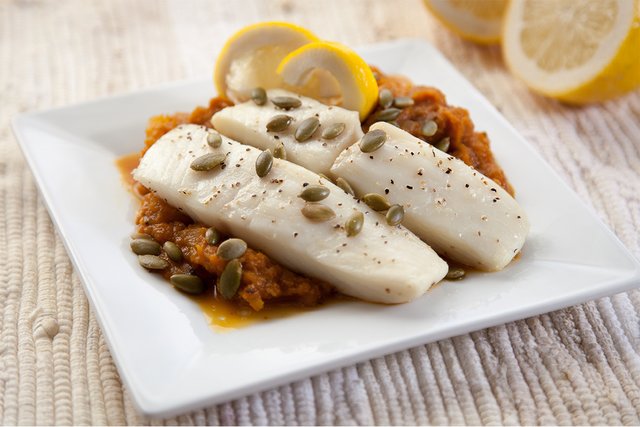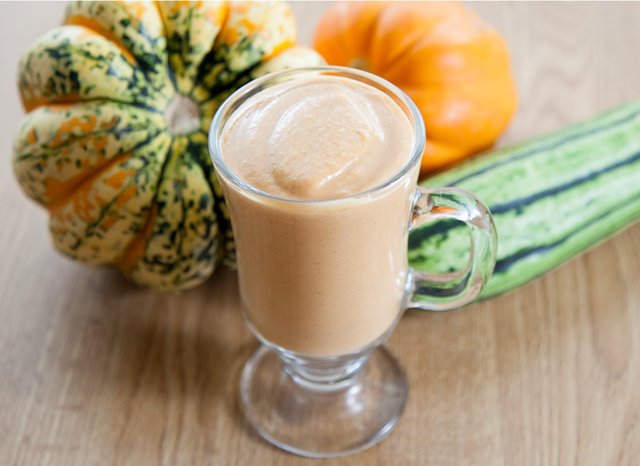Squash poor health and low energy with these winter wonders!
With the arrival of sweater weather, it's time to fall in love with winter squash: acorn, butternut, Hubbard, buttercup, delicate, spaghetti squash, and pumpkin!
These members of the Cucurbitaceae family of vegetables are not only a great way to help tame a sweet tooth by infusing your diet with natural sweetness, but they also have a number of notable nutritional benefits. And they're highly versatile in the kitchen!A Bounty Of Winter Squash Benefits
Many winter squash are a leading source of beta-carotene. Once consumed, beta-carotene can be converted into vitamin A, which plays a role in supporting your immune and eye health. What's more, in a study published in Nutrition, Metabolism and Cardiovascular Disease, involving more than 37,000 participants, researchers found a significant association between higher beta-carotene intake and reduced incidence of type 2 diabetes.[1]
Winter squash is also an excellent source of fiber, particularly the soluble fiber pectin. Pectin possesses unique thickening properties, which ultimately helps to slow digestion, provide long-lasting energy, and steady blood glucose levels following a meal.
Winter squash also gives you magnesium, potassium, manganese, and is an excellent source of vitamin C. And with only about 60 calories per cup, this nutrient bounty has few if any repercussions where your waistline is concerned.
The most nutrient-dense winter squash are those with deeper-colored flesh, such as butternut, acorn, buttercup and Hubbard.
How To Cook Winter Squash
Cut the squash in half (for butternut, slice in half lengthwise), remove the seeds with a spoon, brush the flesh with oil, and place the squash on a baking sheet cut-side down. You can also slice the squash into smaller pieces for quicker cooking, but this takes a bit more knife work. Bake at 400 degrees F until the flesh is fork tender. Cooking times will vary for different squash, but 25-35 minutes is a good starting place.
At this point, the squash flesh can be scraped from the skin and eaten as-is. It can also be transferred to a bowl and mashed with a fork or potato masher. For a finer consistency, try using a food processor. You can also arrange slices of squash in a microwavable dish, cover loosely with a damp paper towel, and heat for 10-12 minutes or until tender.
Now that you know how to cook squash, check out these three healthy recipes!
Good Gourd Oatmeal
This autumn oatmeal is the perfect start to any day, particularly a day filled with meetings and deadlines. The oats and fibrous squash provide long-lasting energy levels to help you tackle whatever lies ahead.
Plus, the hint of sweetness from the squash, not to mention the natural sweetness from the cranberries and syrup, will make you feel as if you just started your day with dessert—one that's good for you!

Ingredients
- Steel-cut oats: 1 cup
- Low-fat milk: 1/2 cup
- Winter squash, pureed: 3/4 cup
- Dried cranberries: 1/3 cup
- Cinnamon: 1 tsp
- Nutmeg: 1/2 tsp
- Walnuts: 1/3 cup
- Pure maple syrup (optional): 8 tsp
Directions
- Place the oats, a pinch of salt, and 3 cups water in a medium-sized saucepan. Bring it to a slight boil, then remove it from the heat and let it sit covered in the refrigerator overnight.
- In the morning, add milk, squash puree, cranberries, cinnamon, and nutmeg to the pan. Heat over medium-low, stirring often, until the mixture is warmed through. Serve in bowls and top with walnuts and maple syrup. Reheat leftovers in a pan with a few splashes of additional milk.
Nutrition Facts
- Serving Size: 1 bowl (without syrup)
- Recipe yields 4 Servings
- Calories 314
- Fat 10 g
- Carbs 46 g (6 g fiber)
- Protein 10 g
Halibut With Squash Sauce
Tired of the same broiled tilapia and lemon? Give this autumn recipe a try! The subtle sweetness of the squash puree pairs beautifully with the delicate, buttery halibut. Just be careful not to eat the entire yield in one sitting!

Ingredients
- Halibut: 4 6-ounce fillets
- Olive oil: 1 tbsp
- Yellow onion, chopped: 1 large
- Garlic, minced: 3 cloves
- Winter squash, cooked: 3 cups
- Chicken broth: 1 cup
- Fresh thyme: 1 tbsp
- Lemon zest: 2 tsp
- Salt: 1/2 tsp
- Black pepper: 1/4 tsp
- Roasted pumpkin seeds: 1/4 cup
Directions
- Heat your oven to 425 degrees F. Place the halibut on a parchment-paper-lined baking sheet, and season it with salt and black pepper. Bake until the fish is just opaque in the center, about 10-12 minutes.
- Heat oil in a skillet over medium heat. Add the onion, and cook it until it's soft and darkened, about 7 minutes. Stir in the garlic, and heat for another minute. Place the squash, broth, thyme, lemon zest, salt, and black pepper into a pot, and simmer for 1 minute. Combine everything in a blender and blend until smooth.
- Divide the squash sauce among serving plates, and nestle the fish into the sauce. Garnish with pumpkin seeds.
Nutrition Facts
- Serving Size: 1 fish
- Recipe yields 4 servings
- Calories 378
- Fat 14 g
- Carbs 21 g (1 g fiber)
- Protein 42 g
Squash Pie Shake
Squash post-workout soreness with this delicious shake! This high-protein treat includes a boatload of good-for-you kefir and plenty of sweetness to give you the taste you desire, and nutrients your muscles need following a workout.

Ingredients
- Plain kefir: 1 cup
- Winter squash, cooked: 1 cup
- Vanilla protein powder: 1 scoop
- Almond butter: 2 tsp
- Pure maple syrup (optional): 1 tsp
- Pumpkin pie spice: 1/2 tsp
- Banana, frozen and chopped: 1 small
Directions
- Place all of the ingredients in a blender, and blend them until smooth.
Nutrition Facts
- Serving Size: 1 shake
- Recipe yields 1 serving
- Calories 453
- Fat 9 g
- Carbs 59 g (3 g fiber)
- Protein 34 g







0 comments:
Post a Comment